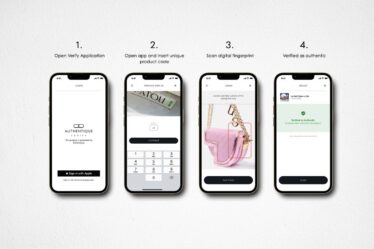
If a retailer has stores in two nearby cities, does it help to know that it’s expected to be a single degree hotter in one city than the other around the time of an upcoming sale?
As it turns out, it does. (More on this later.) Companies can collect petabytes of data covering everything from weather to shopping activity that they hope will let them predict customers’ behaviour, identify trends or figure out what to stock — and where.
No single data point is a silver bullet. The best decisions will still come from robust data sets that present as complete a picture as possible.
But amid all the noise, these are a few of the signals worth paying attention to.
Every Degree Matters
It’s obvious that a store in a hotter region should carry more warm-weather clothing than one in a cooler location. But even changes in temperature that are practically imperceptible to shoppers can influence demand.
Using AI, Levi’s realised the one-degree Celsius difference between Rome and Milan was enough to affect customer behaviour in those cities, said Katia Walsh, the company’s senior vice president and chief strategy and artificial intelligence officer. As a result, in Rome, where it’s slightly warmer, Levi’s started offering shorts, skirts and lighter washes as early as March and kept them stocked in greater numbers.
Walsh also noted that the weather forecast for the weeks and days before an important retail event can be a strong predictor of shopper behaviour, which is why Levi’s adds detailed weather data into the AI-powered reports it gives its teams on the ground. If unseasonably warm weather is expected around a winter sale, for example, they’ll know they need to adjust their selling suggestions and give a nudge to products like down jackets.
Some of the Best Partner Data Is About What You’re Not Selling
One advantage multi-brand retailers have is their visibility into what customers are responding to across a range of brands. Neiman Marcus has been putting its recent tech investments to use by connecting customer data with sales data to discover what shoppers want but aren’t finding.
“Our merchant teams are going to the brand partners, ‘Hey, there’s white space in the assortment here based on price point, turn [and] comparisons to competitors,’” said Bob Kupbens, Neiman Marcus Group’s chief product and technology officer. “We have had some examples where we’ve used the data that we’ve shown them and they’ve actually either increased or decreased their manufacturing runs on certain products or they’ve added things into their lines.”
Kupbens gave the example of a brand that primarily makes footwear introducing what proved a successful line of flats based on Neiman Marcus’ data. The white spaces Neiman Marcus can identify can be more granular, too, such as suggested modifications on existing products.
TikTok Has Supplanted Instagram for Trendspotters
Instagram may have 2 billion monthly active users to TikTok’s 1 billion, but TikTok is now the better venue to spot emerging fashion trends, according to Julie Pont, fashion and creative director at Heuritech, a forecasting firm that analyses millions of social-media images daily using AI. Retailers able to identify a new trend and act quickly can capitalise.
Heuritech still focuses much of its AI-powered work on Instagram’s static imagery, but that’s because the data processing involved in analysing millions of data-heavy TikTok videos can be overwhelming.
“For manual, traditional trend forecasting, we are operating mainly on TikTok, because this is now where we spot the early signals,” she said.
There are a few reasons TikTok offers better trend data, Pont explained. The user experience is based more on reposts than likes, so popular content spreads faster than on Instagram. Videos also provide a more complete picture of an outfit than still imagery, including how it looks in three dimensions and how it moves. Pont said in her opinion users are also just more creative on TikTok, and there’s a more noticeable range of age groups, from pre-teens to seniors.
The biggest influencers on Instagram aren’t necessarily the biggest on TikTok either, meaning brands need to pay attention to those who hold sway on TikTok specifically. TikTok has even given rise to its own set of emerging fashion critics.
To Predict a Customer’s Lifetime Value, Look at Their First Purchase
Invest in the right customers and they can yield rewards for years. Mytheresa has turned spotting its best new customers into a science, and one key measure it pays attention to is which item drew a shopper in the first place.
“If the first purchase is a high-value, ready-to-wear item, [there is] much higher correlation to future spend levels than if the first item is a €200 pair of sneakers,” chief executive Michael Kliger previously told BoF.
It’s not the only data point Mytheresa considers. It has a database of information such as which items shoppers look at, which emails they open and even which payment methods they use. To make its predictions, it uses AI to analyse these and other factors. It lets the company know where to direct its marketing and which customers to extend special treatment to as it seeks to nurture them into loyal shoppers.
The Key to Private Clients Is Engagement
Private clients can make up a significant share of a brand’s or retailer’s sales, and the trick to building the strongest relationship may come down to simple engagement.
“We see that the biggest indicator of [customer lifetime value], loyalty, NPS, etc. is engagement, and to put a finer point on it, personalised engagement,” said Christina Czap, co-founder and chief executive of Seer, which makes software for luxury sales associates to compile shoppable lookbooks for private clients.
Because Seer is able to see how customers interact with communications sent via its software, it’s able to gather insights on what works. Czap said pairing the usual customer information such as past purchases and which items they’ve been browsing with more personal insights, like that they’re heading to an island for their son’s wedding in the coming weeks, is what makes for the most successful messaging. Customers are more likely to continue opening these messages over time, leading to more sales.



